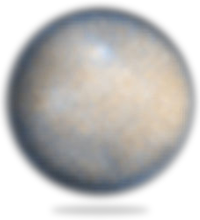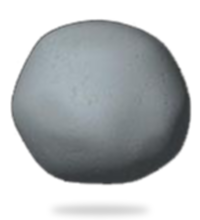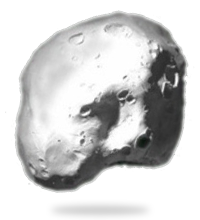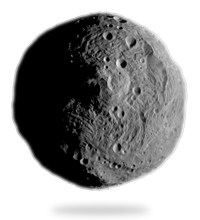
The asteroid belt between Mars and Jupiter has millions of asteroids. The largest is Ceres; Ceres could fit nicely into the state of Texas per diameter length. Vesta is the brightest of the four.
This is the current placement of the four largest asteroids, Ceres, Pallas, Juno, and Vesta:

My Analysis
My own astrology interpretation suggests that Vesta will be entering one it's possible ruler signs (Scorpio), and sexuality and sexual promiscuity may be a minor to major theme starting from mid 2014 to 2015.
Juno seems to be related to Libra, and has a lot to do with marriage and judicial review. I find it interesting that with Juno entering the sign of Aries, there appears to be much sudden legal discussions concerning gay marriage.
Pallas may have Pisces for a rulership sign, as it seems to be connected to medicine, chemistry, and the arts. With Pallas entering the sign of Virgo, we could see accelerated criticism of big pharma; the FDA is looking like the NSA at this time as they are currently requesting government employees to snoop social network blogs in search of critics of FDA approved drugs.
Finally, Ceres appears to rule Cancer, as it is connected to food, the home, and the mother-figure. It's placement in Scorpio may suggest "venomous food" (i.e. GMO food) and exposure of such, or intense relations with the mother-figure or in the home in some way (and note that about 20% of people under the age of 25 live with their parents at this time due to lack of employment. This could define anger and frustration in the home). Also note that Ceres has an ocean and thus may have active life forms.
Interpretation From Astrograph.com.
The four major asteroids, Ceres, Pallas, Juno and Vesta, were discovered within a few years of each other at the beginning of the 19th century, and named for female goddesses in the Roman pantheon. Their discovery has been synchronous with the rise of the women's movement in the West. These four asteroids seem to symbolize four different facets of the feminine and represent a fresh way of regarding the feminine principle in astrology, going beyond the relatively simple categories of wife and mother, as represented by Venus and the Moon. The major asteroids are the four largest asteroids in the asteroid belt (located between Mars and Jupiter shown in white) and their qualities are described below.
 | Ceres | |
| Keyword: Nurturing |  |
Ceres was the first asteroid ever discovered, on New Year's Day in 1801! She is the most massive body in the asteroid belt, and is now defined as a dwarf planet along with Pluto and Eris. Because Ceres is believed to contain a liquid ocean, she is a main target for research of extraterrestrial life. As goddess of the harvest and the natural process of fertility and renewal, Ceres represents the process of nurturing and motherhood in an individual's chart, and has been attributed to the sign Cancer as a co-ruler with the Moon. In a chart, an afflicted Ceres by planetary aspect may indicate problems with being able to nurture, or to be nurtured by others, perhaps manifesting in food complexes, or a feeling of rejection by parental figures. When strongly placed, it symbolizes the ability to take on parental responsibilities, especially in a female subject, and also may indicate someone who has a close relationship with the earth, as gardener or grower of food. Also the position of Ceres by house and sign, and its planetary connections, is likely to indicate the way in which motherhood (or parenthood) manifests in one's life. |
 | Pallas | |
| Keyword: Wisdom |  |
| The asteroid Pallas (short for Pallas Athene) was the second of the four major asteroids to be discovered, in 1802. Pallas represents the wisdom of the female spirit, as the mythology of Pallas Athene would indicate: born from the head of Zeus, and symbolized by the owl and the snake, Pallas Athene was a powerful symbol for independence and wisdom in the ancient mythology. She did not ally herself with any man, but rather was a strong and warrior-like figure who aided men of good will and whose advice was prized for its intelligence. The astrology of the asteroid Pallas indicates such a feminine spirit of independence and cool mental judgment in either a man?s or a woman?s chart. In an individual chart, Pallas represents the creative use of the mental faculty in combination with ageless wisdom, and is also involved with the arts, especially the plastic arts such as sculpture and pottery, and with medicinal remedies. Its position by house and sign indicates where in one?s life the divine spark of creative intelligence and higher wisdom may spring forth. |
 | Juno | |
| Keyword: Marriage |  |
| The asteroid Juno was the third of the four major asteroids to be discovered, in 1805. In mythology Juno (or the Greek Hera) was wife and consort to Jupiter, and therefore the astrology of Juno represents the partnering energy of intimate relationship. This is also the territory of Venus and the Moon, but where Juno seems to differ is in representing the partnership energy in a new light, as in the more modern issues of where the boundaries are with another person, how much sharing is appropriate, versus holding back, are there issues of bitterness and jealousy, or projected authority and control onto another person, and intimacy needs in general. When Juno is prominent in a natal chart, all these type of issues are important to the individual. If Juno is aspected by another planet, these issues may be colored by the energy of that planet. Juno's position by house and sign is an indication of the area of life in which these issues will be most important. |
 | Vesta | |
| Keyword: Self-sufficiency |  |
| The asteroid Vesta was the last of the four major asteroids to be discovered, in 1807. The mythology of Vesta (or Greek Hestia) is as follows: one of the sisters of Jupiter and Juno, Vesta chose to remain a virgin and not marry. She was the goddess of the hearth fire, which was of utmost importance in ancient times, connoting hospitality and the basic vitality of the home or city-state, and her astrological symbol is the flame. It is interesting to note that Vesta is the brightest of the four asteroids. Her symbolism also suggests the ?vestal virgin? temple priestesses of the ancient Geek world, and their commitment to no man, but to their own inner flame of service to the goddess. Their service might even be of a sexual nature, but they remained untouched by any sexual intimacy with another person. In accordance with its mythology, the asteroid Vesta is involved with both the signs Virgo and Scorpio. In the astrology of Vesta in an individual chart, these issues of sexuality and completeness unto oneself predominate. Possible associations are the woman (or man) who chooses not a mate, but as a nun or monk takes on a higher purpose than normal family life, also issues of sexuality and who is ultimately served in the process, self or other. Thus when Vesta is prominent in the chart, there may be issues with purity, singleness and sexuality either by abstinence or by one involving oneself with multiple partners which yet leave the individual untouched by relationship. The placement of Vesta by house and sign also indicate the area of life where these issues may manifest. |
Views: 91










Replies